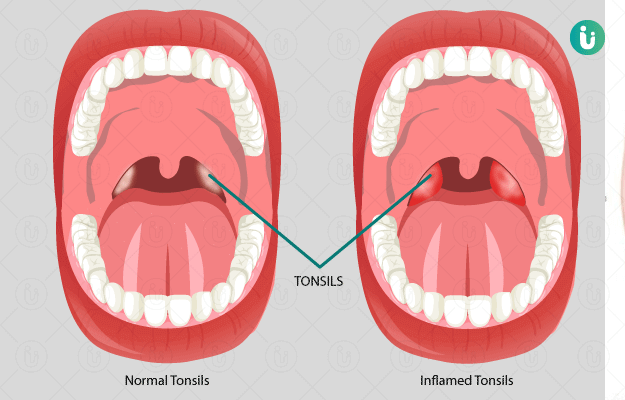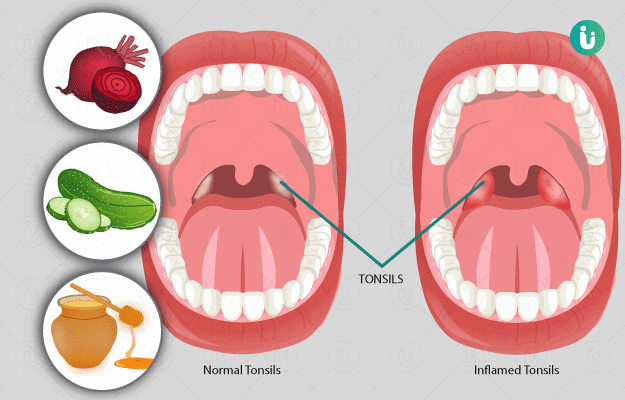What is Tonsillitis?
Tonsillitis refers to the infection of the tonsils (glands on either side of the back of the throat). Tonsils are a part of the lymphatic system, which are responsible for maintaining our immunity. The inflammation of these glands leads to symptoms of tonsillitis. This infection tends to be common in children but is noted to develop in adults as well.
What are its main signs and symptoms?
The symptoms of tonsillitis may be as follows:
- Sore throat
- Pain in the neck
- Pain when trying to swallow food
- Fever
- Swelling in the tonsils
- Bad breath
- A yellow or white coating on the tonsils
- Headache
The symptoms often tend to be painful and may lead to great discomfort. Young children may experience other accompanying symptoms such as nausea and stomach pain.
What are the main causes?
Tonsillitis is a viral or bacterial infection and often follows a cold. Hence, the symptoms of common cold such as runny nose, cough, and fever may slowly transition into the symptoms of tonsillitis as they turn more severe.
How is it diagnosed and treated?
Immunisation against tonsillitis is not possible and hence, it cannot be prevented easily. An individual may suffer from tonsillitis more than once a lifetime.
The diagnosis of tonsillitis can be done by the examination of the symptoms and via laboratory analysis of the throat swab to identify the organism.
In case tonsillitis has been caused by bacteria, then taking antibiotics is the most effective form of treatment. However, in case tonsillitis is caused due to virus, then medications may not help to eliminate the cause. The following measures can be taken to ease the symptoms:
- Taking paracetamol for reducing fever
- Getting plenty of rest
- Consuming enough fluids
- Eating soft foods
- Gargling with salt water
- Using pain relief medication (only after consulting the doctor).

 Doctors for Tonsillitis
Doctors for Tonsillitis  OTC Medicines for Tonsillitis
OTC Medicines for Tonsillitis
 Tonsillitis articles
Tonsillitis articles

 Home Remedies for Tonsillitis
Home Remedies for Tonsillitis
 Homeopathic Treatment of Tonsillitis
Homeopathic Treatment of Tonsillitis







 Editorial Team
Editorial Team

 Dr. Rachita Narsaria
Dr. Rachita Narsaria











